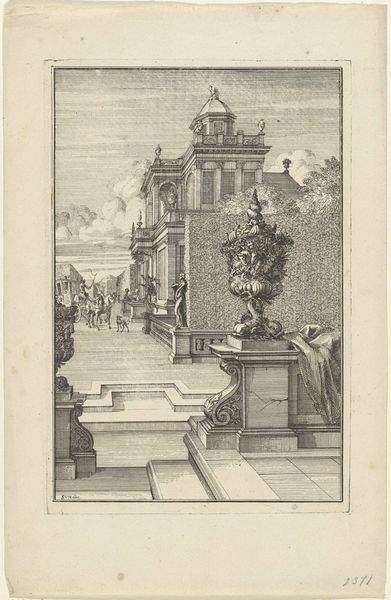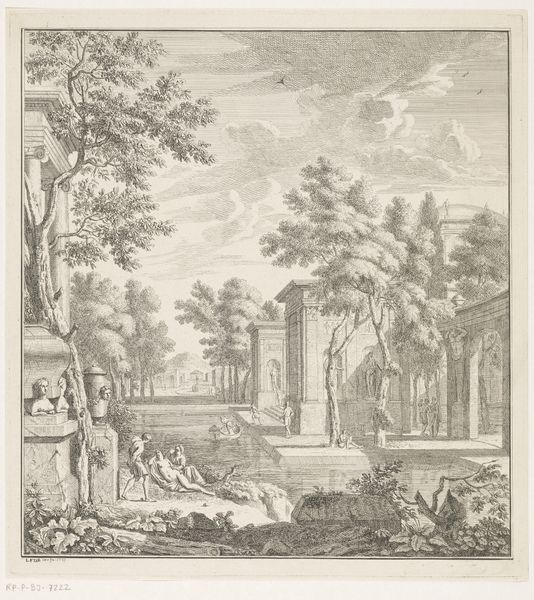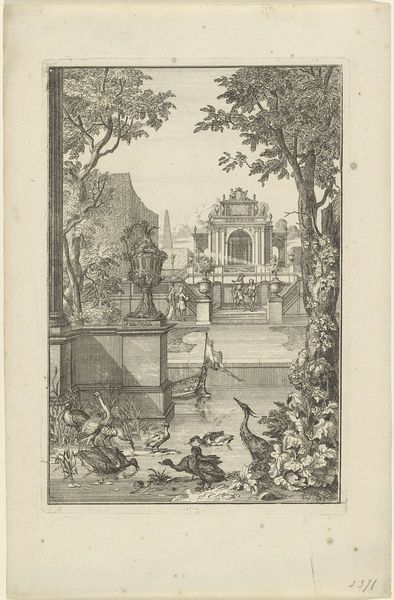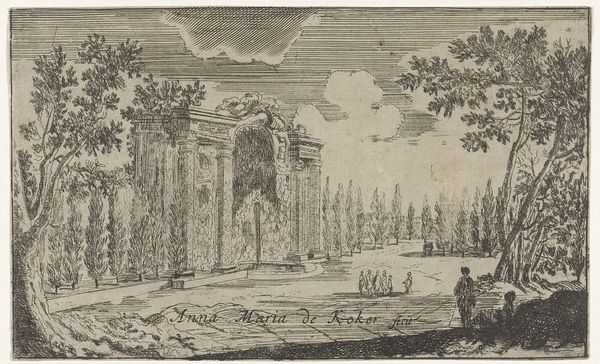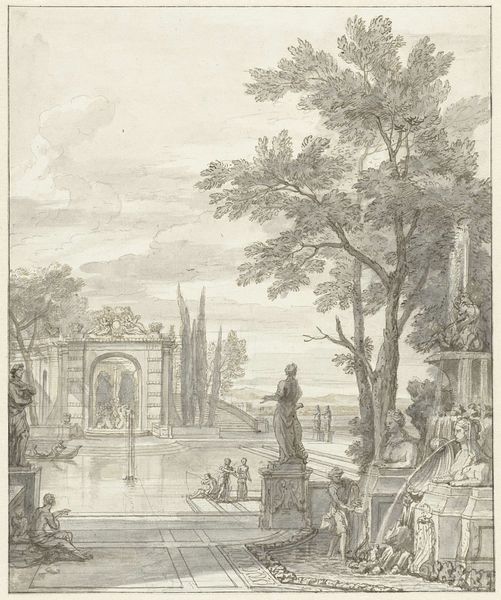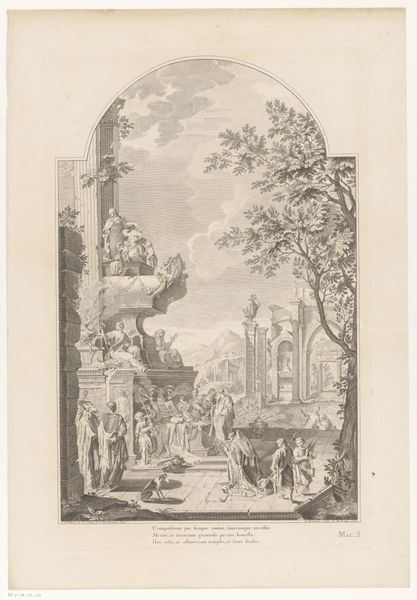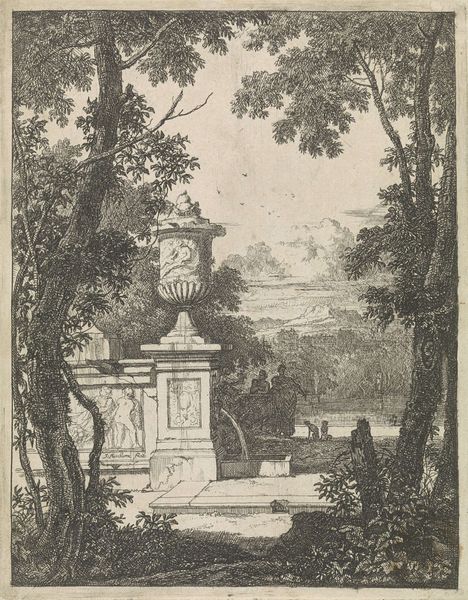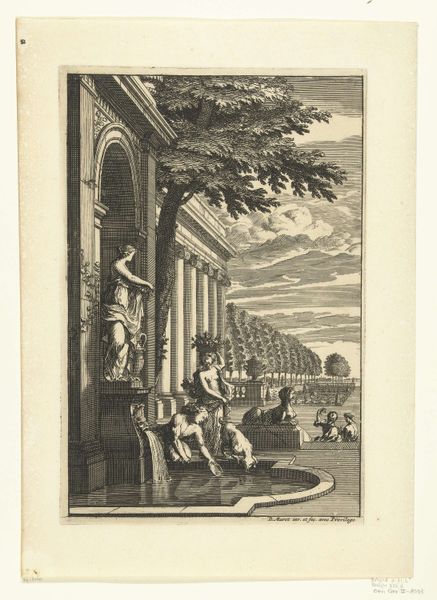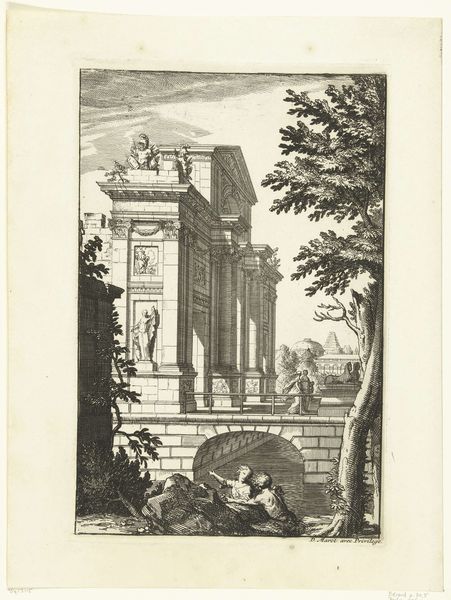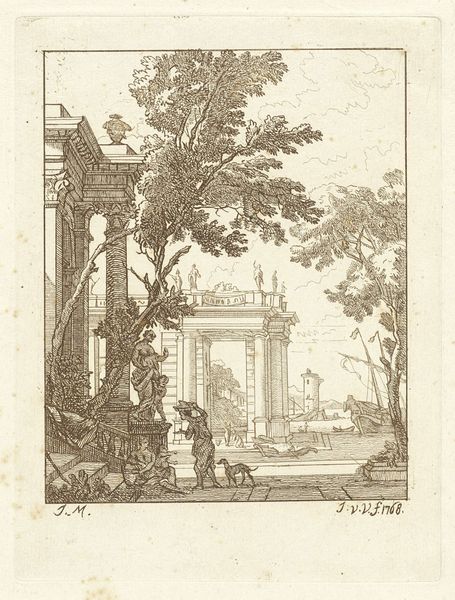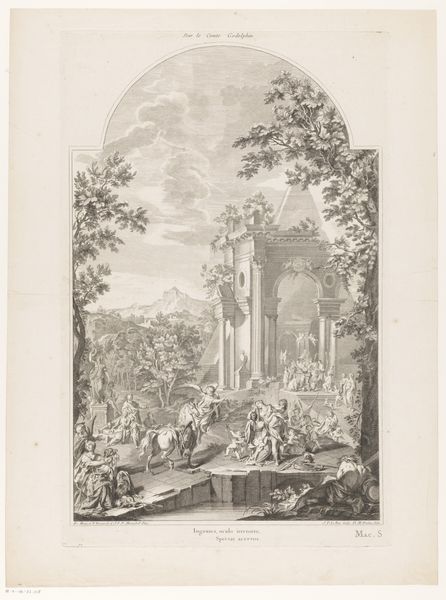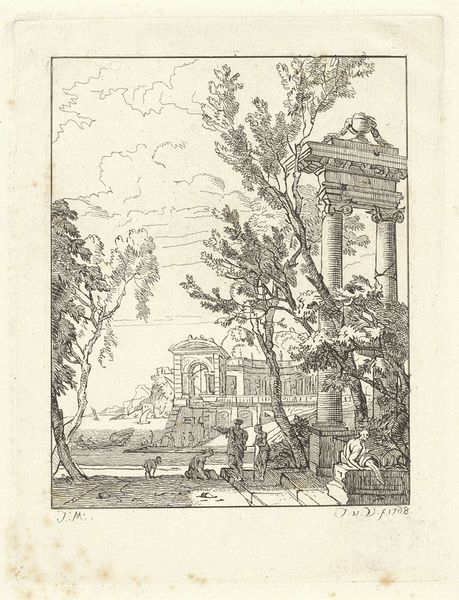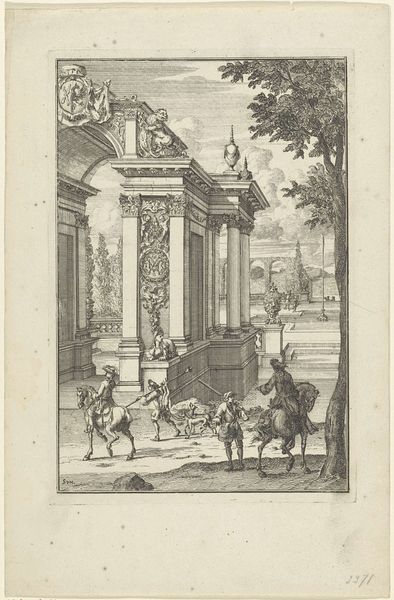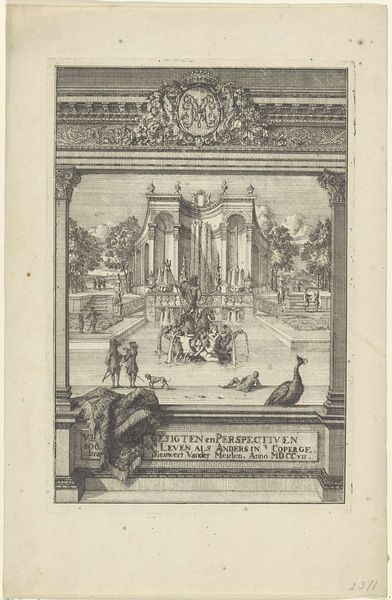
drawing, metal, engraving
#
drawing
#
baroque
#
metal
#
landscape
#
engraving
Dimensions: height 242 mm, width 164 mm
Copyright: Rijks Museum: Open Domain
Curator: It's immediately calming, wouldn't you agree? There's a stillness to this, despite the figures on horseback. Editor: Absolutely. A sense of peace and…almost formal melancholy? It feels like a stage set, perfectly arranged for a poignant drama. Tell me, what exactly are we looking at here? Curator: This engraving by Sieuwert van der Meulen, created in 1707, is entitled "Gezicht op een vijver en een poort"—"View of a pond and a gate." The Rijksmuseum houses this lovely Baroque landscape. Editor: Baroque landscape... which always makes me think of controlled nature. Everything meticulously planned. Look at that gate—a triumphal arch of sorts leading…where? Into the wild? Curator: Precisely. And consider what a gate *means*. Transition, passage…the invitation to step from the known into the unknown. Van der Meulen plays on this expectation. The gate is elaborate and imposing, the path and its environs ordered with similar geometry, but what comes *after* is hazier, more "natural," perhaps less knowable. Editor: So, is he commenting on humanity's attempt to control or understand nature? I mean, look at those urns on the right – nature is so beautiful, but humanity is always tempted to trim and prune it for maximum aesthetic effect, right? Curator: One could see it that way. Or, perhaps, that the definition and expression of ‘nature’ are simply relative to our perceptions and cultural position. I observe some sense of the 'Arcadian ideal,' certainly; look how people appear to be happily situated amongst nature! But the very fact of ordering and cultivating the garden renders 'nature' distinct from "wildness" – suggesting an interesting relationship to natural resources themselves. Editor: True. The act of creating the garden transforms the space and implies labor. Is it utopian... or something else? There's also something wistful here. A golden age perhaps slipping away? Or maybe it's just the soft blurring in the background that contributes to this elegiac feeling? Curator: Wistful is an astute reading, in any case. Baroque art often explored those tensions, between control and freedom, civilization and nature. Editor: It’s fascinating how such detailed lines can still evoke such a soft, reflective mood. Curator: It does speak to the strength of this piece and indeed this cultural moment to so harmoniously evoke order, freedom, and also deep emotion. Thank you for your insights!
Comments
No comments
Be the first to comment and join the conversation on the ultimate creative platform.
